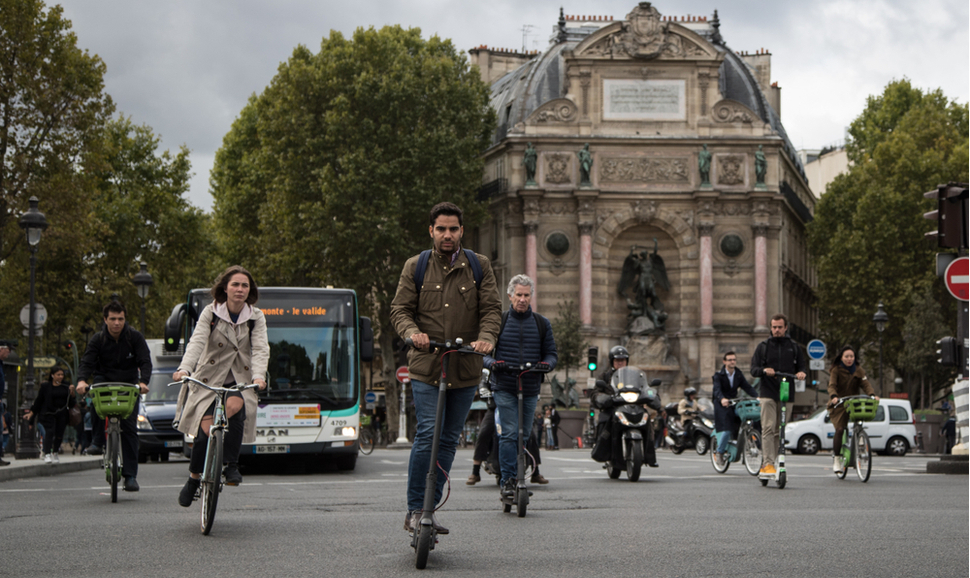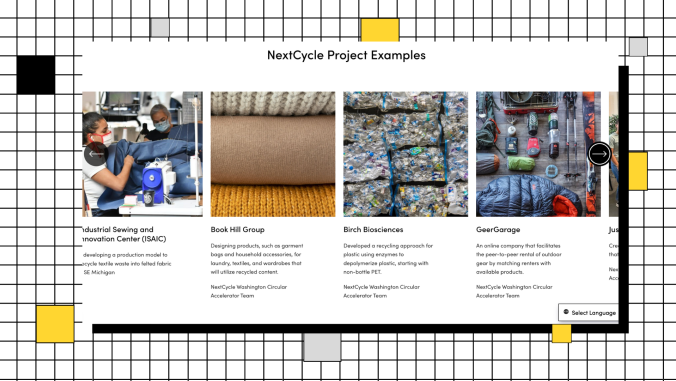What it will take for micromobility to have real, sustained impact
Shared bikes and scooters can contribute to lowering transportation emissions, but they can also have a more immediate impact on cities: equity.

When bikes and scooters began to unexpectedly appear on sidewalks across the country, city governments found themselves scrambling to figure out a slew of issues that they hadn’t anticipated. Some cities reacted by rounding up devices that had been dropped off without permission, and later doled out permits for the bike and scooter share companies.
Meanwhile, the scooter and bike providers also had to figure out how to meet city requirements and later work to address other unexpected challenges such as how durable their units would be. Both the cities and the companies have been trying to figure out how to access and use data collected on scooters responsibly.
Now, two years after the first shared scooters emerged in the United States, there are nearly 60 electric bike and scooter companies worldwide — including companies such as Lyft and Uber that offer other shared modes of transportation, according to Crunchbase.While increasingly the use of micromobility won’t solve the climate crisis on its own, it can have an impact on lowering greenhouse gas emissions in cities.
And some companies and cities have started to figure out how to get along: They have begun to learn that they have to work with one another to achieve their collective and respective sustainability and equity goals.
Lowering emissions and barriers
Lowering emissions and congestion is a major potential upside of micromobility. Our current most popular transportation mode — dominated by cars — accounts for nearly 30 percent of the United States’ greenhouse gas emissions.
When the United Nations Intergovernmental Panel on Climate Change released its sobering report in late 2018, it noted, "Over the past half-century transportation has witnessed faster emissions growth than any other." While increasing the use of micromobility won’t solve the climate crisis on its own, it can have an impact on lowering greenhouse gas emissions in cities.
But micromobility also potentially can have a more immediate impact on the everyday lives of the community.
The average cost of an electric scooter is $300 and an electric bike can cost thousands. That’s money that not every person can afford to spend, when they’re paying rent and other bills that could include a car note.
In contrast, a 2018 end-of-year report from the National Association of City Transportation Officials showed that casual bike-share users paid $2.75 per ride, on average, and e-scooter riders paid $3.50 per ride. That’s much more accessible.
Some cities have tried to subsidize the cost of shared scooters and bikes for disadvantaged communities. For example, in February, the city of Oakland partnered with Lyft, which donated $700,000 to TransForm, an organization focused on improving access to transportation in marginalized communities in California.
Shared scooters, in particular, have been an invitation to people who have otherwise been shut out of the growing move toward micromobility.You don't need to take a lesson before you get on a scooter. You can just get on and ride it.
"You don't need to take a lesson before you get on a scooter. You can just get on and ride it," said Rachel Zack, policy strategist at Remix, a transportation planning software platform. She also noted that studies and surveys are showing promising interest in riding from women and people of color, two populations that have lagged behind in cycling adoption.
Still, Zack said, cities need to disincentivize driving and incentivize other forms of transportation, which could look like eliminating parking or building protected, landscaped bikeways.
Warren Logan, policy director of mobility and interagency relations with Oakland’s Office of the Mayor, who was part of the micromobility workshop at VERGE 19, also sees protected micromobility lanes as a way to boost ridership: "It is in that space where we are making protected, safe, dignified beautiful infrastructure for people to walk and bike and feel safe and dignified doing so," Logan said.
"It is where you get choice riders who are like, ‘Hey, I've never ridden a bike before. I've never ridden a scooter but I feel safe doing it in this protected space.’"
More than a transportation issue
Logan says the real challenge in cities isn’t micromobility. It’s that people are traveling two hours to work, which is largely caused by the housing crisis. In the Bay Area, a growing number of residents have a super commute — defined as 90 minutes or longer — and riding a scooter won’t shorten that.
Workers who cannot afford to live close to their offices are traveling further for their jobs and are therefore pushed to drive cars to work.
"Micromobility is one tool in the toolbox but we should not forget — and by we, I mean not just government, not just private industry, but we as citizens who vote — should not forget that we all participate in collective decision making that causes us to feel the collective consequences of a housing crisis and a mega commute, and ultimately of climate change," Logan said.
Every seemingly small decision that governments, private industry and individuals make has an impact. In order for shared scooters and bikes to have a real, sustained impact, people need to live closer to their jobs and public transit. That means making the decision to build and preserve housing that is affordable. That means companies deciding to locate their headquarters near public transit.
"If you are looking for micromobility to solve climate change, you're wrong. That's just not how this works," Logan said. "If you are looking for micromobility to connect people to transit, it can do that."
This article has been updated to clarify a quote.





